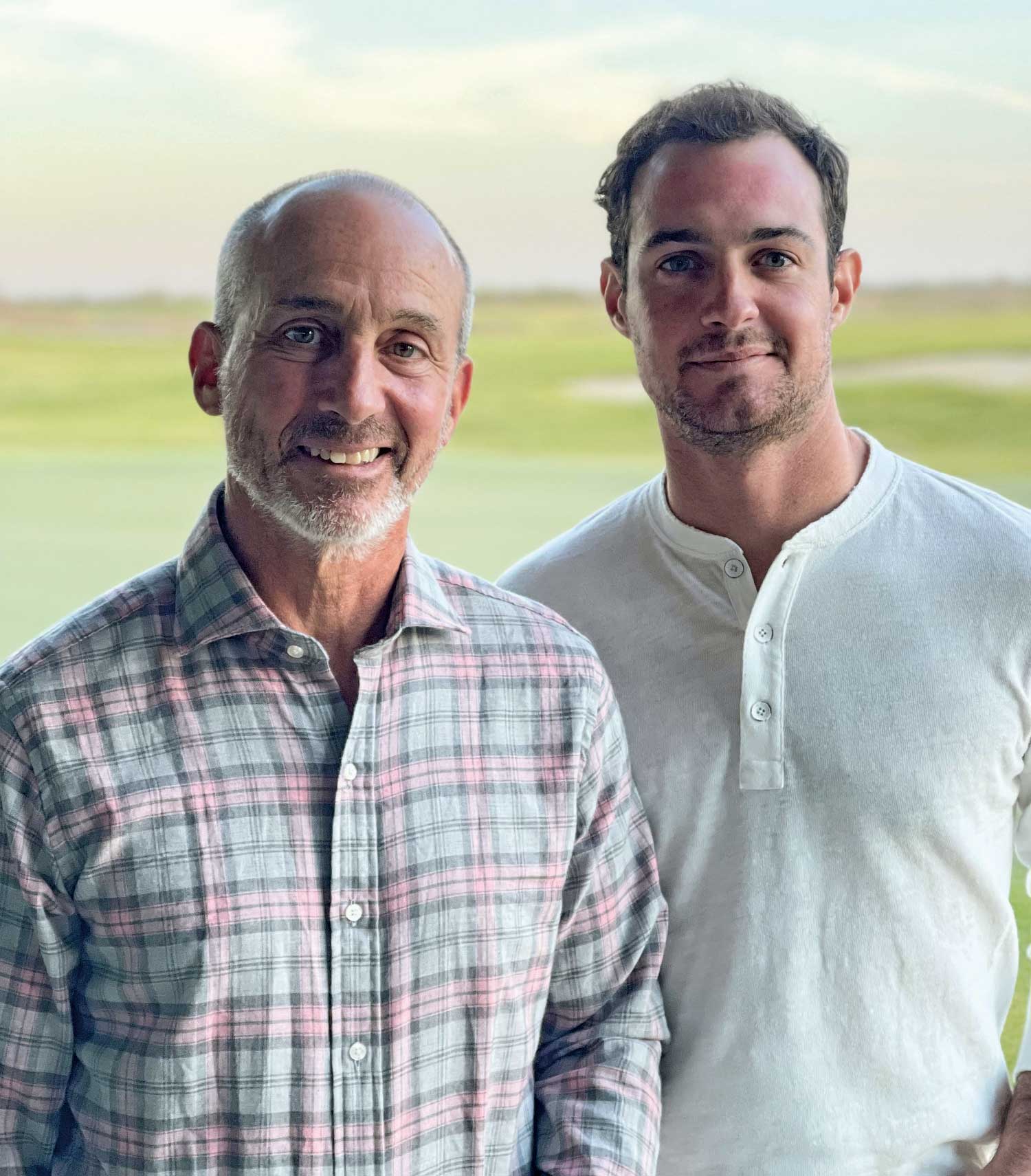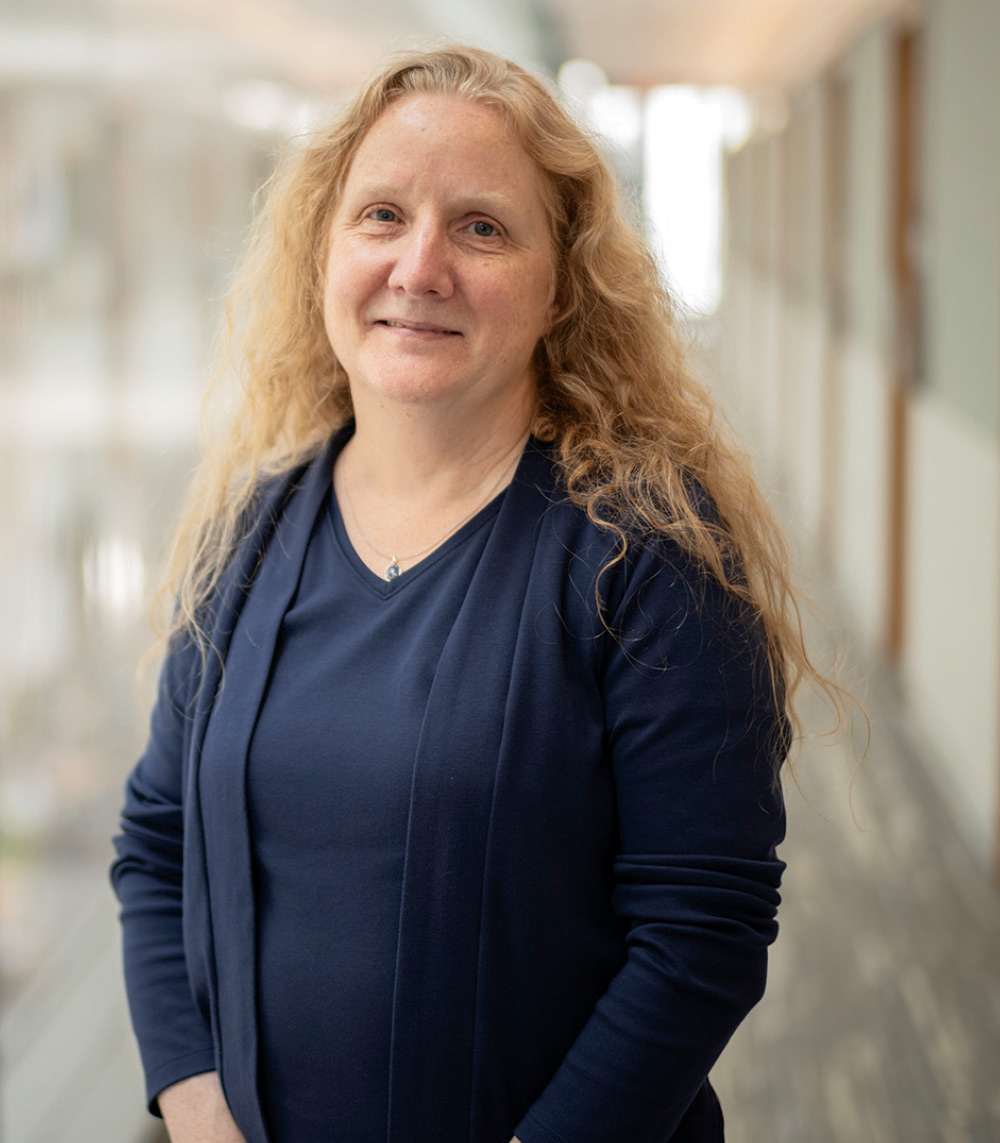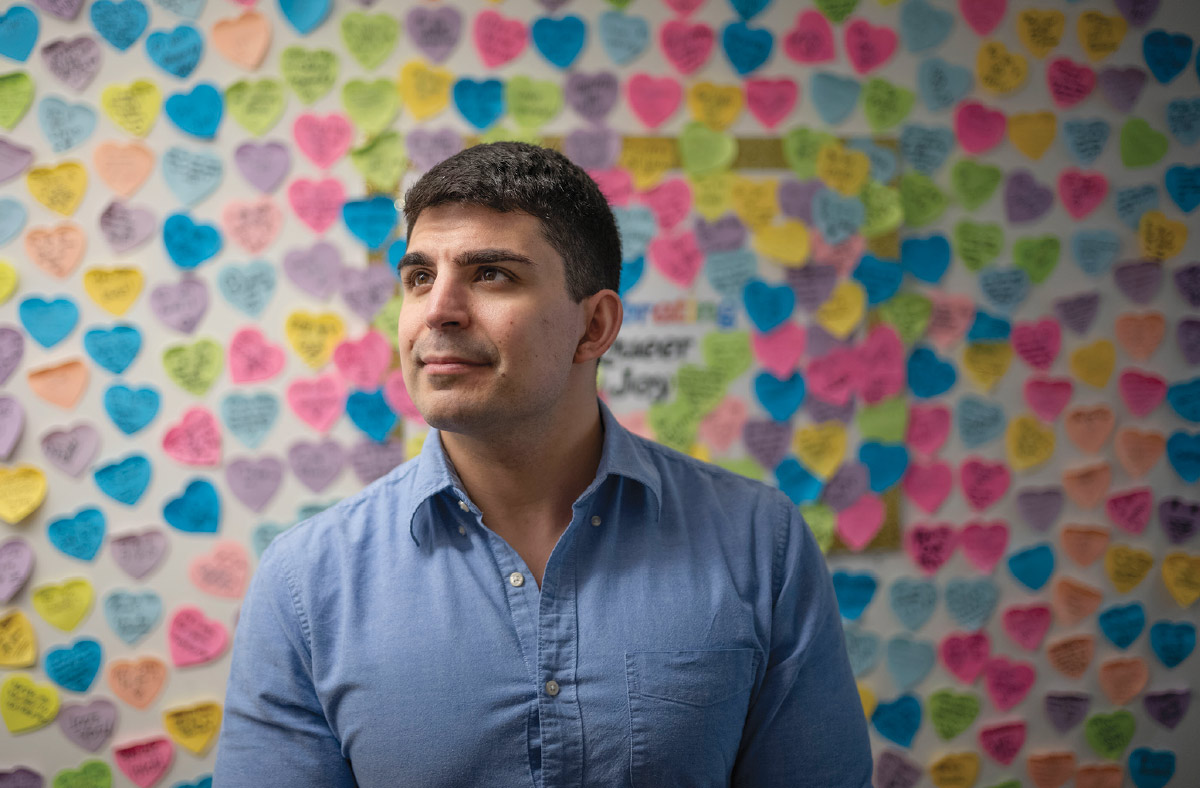
A Space
for Conversation
atthew Bertuch ’14 could befriend anyone in minutes. Outgoing, charming, and empathetic, he made people feel instantly welcome in his presence.
A star pitcher for Swarthmore’s baseball team, he nurtured deep friendships with his teammates and fraternity brothers.
“He was one of the most confident, outgoing, and genuine individuals that I had the pleasure to know,” says Rory McTear ’13, who played baseball alongside Matt. “He was unafraid to put himself out there, to go the extra mile. He challenged us to be better players, and ultimately to be better individuals.”
After graduating with a degree in economics, Matt pursued a career in management consulting, reaching the ranks of senior analyst and product manager at a top consulting firm specializing in game-theory applications in business. As he moved from achievement to achievement, Bertuch’s career blossomed in Boston and then San Francisco. But he loved traveling back east to spend summers with family in Long Island, N.Y. An expert tuna fisherman, he spent much of these visits off the Montauk coast fishing with his closest friends. It just so happened that the bluefin tuna’s annual trans-Atlantic migration aligned neatly with his family visits.
“If I had to pick a favorite memory of Matt, it would be getting up at 1:30 in the morning, on more than one occasion, to get out on a boat and fish,” says Ben Mendelson ’08, who spent many summers on Montauk with Matt and his family. While they had never crossed paths as students, Mendelson met Bertuch at an alumni event, and the two became quick friends.
During one summer visit, Matt’s father, Michael Bertuch, remembers Matt arriving at the house to find an empty pantry.
“I hadn’t gone grocery shopping and was about to go out,” says Bertuch, “but Matt said no, and within maybe 20 minutes, he had caught enough blue crabs off the dock here for us to make dinner.”
Matt was incredibly attuned to the sea and to the local wildlife from an early age, his father recalls. At night, to help himself fall asleep, Matt would sometimes imagine himself as a striped bass navigating the ocean. During those long summer nights, he would walk to the edge of the water, where he would turn over every rock to see what creatures he could find.
Matt held onto this curiosity — this zeal for experience, exploration, and connection — throughout his life.
“He wanted to know everything about everything,” says Mendelson. “I’ve never learned more about types of fish, or the quality of snow, or even stimpmeters than I did with Matt.”
But as his friends and family would learn, Matt’s long list of accomplishments and outgoing demeanor concealed a deep struggle. In December 2021, Matt died by suicide in New York City. His death left his family, friends, and loved ones reeling.
“What he told me [earlier] that week didn’t make very much sense to me,” says Bertuch, “but he said he felt like he was failing.”
As Bertuch explains, for successful, high-achieving individuals, this sense of never being good enough — of being a failure — can grow into a persistent and damaging force. Popularly referred to as perfectionism, it often manifests as a tendency to demand flawless levels of achievement from oneself: an impossible, self-imposed standard that can lead to anxiety, depression, and other mental health problems.
Speaking on high achievers’ increased risk for suicide, Lucas Zullo ’13, the clinical director of the David Farber ASPIRE Center at Jefferson Health in Philadelphia, says: “When people have thoughts of suicide, there can sometimes be this idea that if I just achieve enough, it’ll go away. But then, combined with that, is the idea that high-achieving people don’t have these problems — that they can’t have thoughts of suicide, or anxiety — they don’t have the time,” says Zullo. “It’s about the portrayal of strength and the portrayal of a certain image that is inconsistent with the fact that you’re still a human being with feelings,” he adds. “And that really vicious self-invalidation can keep people from getting help.”
For Michael Bertuch and many of Matt’s friends, it became crucial to tell Matt’s story — not only to honor his memory, but to raise awareness around suicide risk and prevention, particularly among high-achieving individuals like Matt.
Zullo is on call seven days a week at the ASPIRE Center. He notes it’s been an especially busy start to the year with a sharp increase in crisis calls.
“I just want to give you a heads up,” says Zullo during an interview. “There’s a chance I’ll get called for a clinical emergency, so I might just need to pause for a few minutes.”
The ASPIRE Center is a suicide prevention, treatment, and research center that offers a full range of outpatient services for at-risk people of all ages, and also for family members whose loved ones have died by suicide. Offering evidence-based, community-partnered treatment and care, the ASPIRE Center is emerging as a national leader in suicide prevention and research since its founding in 2022.

“That was my first exposure to the field of suicide prevention,” says Zullo.
After graduating from Swarthmore, he worked with the Center for Family Intervention Science for a year, and then worked as a research assistant at the University of Pennsylvania’s Aaron T. Beck Psychopathology Research Center.
“I was on the Suicide Prevention Team,” says Zullo, “and I was also personal assistant to Aaron Beck, the father of cognitive behavioral therapy.”
Zullo completed his doctoral studies at University of Texas Southwestern Medical Center, then went on to his post-doctoral fellowship at UCLA, where he worked alongside Joan Asarnow, a leader in youth suicide research and prevention.
He was completing his post-doc fellowship when the COVID-19 pandemic began in the U.S. During this time, Zullo reached out to also work with the Trevor Project, a suicide prevention organization for LGBTQ+ youth, and 988 Suicide & Crisis Lifeline, the national Suicide & Crisis Hotline.
“For adolescent girls, there was over a 50% increase in presentations to the emergency department during the pandemic,” says Zullo, “and emergency crisis resources were spiking in their use. I felt compelled, as a professional, to do something.”
He returned to Philadelphia in 2023 to establish the clinical wing of the ASPIRE Center, where he specializes in LGBTQ+ youth suicide prevention.
The demand for emergency services remains higher than ever, especially in light of an increasingly antagonistic political landscape for LGBTQ+ people.
“When I’m supporting the Trevor Project and 988, there are some periods where I’m getting called constantly. It’s at the point where I’m on a call, and then someone else starts calling me while I’m on that call,” says Zullo. “To give context, normally, I’ll get called maybe three times a night for a suicide attempt, but, recently, in the span of just four hours, I was called 15 times.”
“Depression and anxiety are incredibly common, and I think many of us have an awareness of that,” says Gillham, whose classes at Swarthmore include Clinical Psychology and Well-Being, “but maybe not an awareness of actually how common they are.”

“Our society is terrified to even say the word ‘suicide,’” Zullo says. “It’s very stigmatizing. People who have these thoughts are scared to tell other people based on their reactions. And so by not talking about it, people feel more isolated and alone, and it makes the situation so much worse.” For Zullo, this stigma is why normalizing open and frank discussions about suicide is so important.
“It makes people feel normal,” he says. “If you look at rates of thoughts of suicide, these thoughts are relatively common. And so it’s not this totally out-of-the-blue phenomenon. Let’s talk about it, so we can be there for people experiencing it.”
One of the ways Zullo addresses the stigma is by approaching suicide treatment and prevention from a community perspective.
“At the ASPIRE Center, we try to break that paradigm of stigma, and the first thing we say to a patient is, ‘Who do you want to bring with you so you’re not alone in your journey?’” he says. “You can bring your roommate, your friends, even the person you cook with. They can come with you and understand what you need in order to stay safe.”
Since Matt’s suicide, Mendelson has confronted the stigma around suicide head-on.
“Especially with young men, there’s this sense that you can’t talk about your feelings or what bothers you,” he says. “There’s this macho image of what a man should be, and because of that you don’t have the ability to really get to the root of some of the things that are going on internally.”
Zullo sees this dynamic firsthand at the ASPIRE Center. While more women attempt suicide, statistically, more men die by suicide, he says.
“Society tells our boys and our men that they can’t express feelings, they can’t cry, they can’t get mental health care, they shouldn’t talk to other people,” he says. “I’ve had situations where I meet teenagers and I get the response, ‘I didn’t know that men could be therapists.’ It’s baked into our society. And because of all of that stigma that’s forced onto men, they’re severely isolated and cut off from many of the resources that could help.”
In the aftermath of Matt’s death, his friends found support.
“I did go see a therapist, and I will see one forever,” says Mendelson. “The best thing I ever did was to really talk through Matt’s passing, and now it’s become my own self-work — work I do to honor him.”
Since his son’s death, Michael Bertuch has become an outspoken advocate for mental health, working to raise awareness around suicide risk and prevention. He understands Matt’s death as part of a systemic cultural pattern shaped by an impulse toward perfectionism and an overemphasis on individual achievement.
“American culture focuses so relentlessly on individuals and not communities,” says Bertuch, “and this is where suicide rates are growing.”
Bertuch believes that finding meaningful ways to create and sustain community — rather than emphasize individual achievement — can address these concerning statistics. To this end, Bertuch, along with McTear, have raised funds to renovate Swarthmore’s baseball dugout, a space where Matt spent much of his time as a varsity pitcher, create a memorial for Matt, and establish a hall of fame honoring the long legacy of the Swarthmore baseball community. “It’s one of the oldest programs, which predates the NCAA,” explains Bertuch.

“On a campus like Swarthmore, it’s important to create space for people to have these conversations,” says McTear. “Through this dugout project, we’re trying to create a place where players can find the resources they need to talk about the issues they have when they’re struggling — to not keep them in.”
For Zullo, acts of community-building like this are a critical part of suicide prevention.“There are so many routes to take,” he says. “It’s not just volunteering for a hotline; it’s not just becoming a clinical psychologist.
“I want to broaden the lens of what we mean by suicide prevention,” says Zullo. “Hosting a game night for your friends where you’re there to create community — that’s suicide prevention. Setting up a book club — that’s suicide prevention, because it brings people together. If you are thinking about suicide prevention, think about how you most authentically connect with other people,” he adds. “What is your passion to make people feel connected and not alone? Run with that.”
Reflecting on what he wants future student-athletes to think about when they see Matt’s name on the dugout wall, Michael Bertuch says, “I want them to see this beautiful man whose life came to an end unnecessarily, and that none of it had to be this way. When you see his picture and his name, I want you to know that there’s help and hope, and the next achievement isn’t going to make it better. Community will make it better.”
For Zullo, community is at the heart of suicide prevention. “If we’re really going to do it right, it’s about dissemination of evidence-based care — in the schools, in our societies, in our faith communities, in every community,” he says. “How can we normalize conversations about mental health? Because that’s the only way it’s going to work.”
“Right now, this is our opportunity to get people to talk about, build, and relate to a community that’s larger than themselves; something that always supports them,” Bertuch adds. “It’s going to take all of us.”